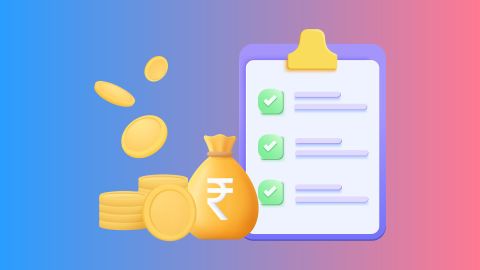A personal loan is a versatile financial product offering a lump sum amount to individuals for various needs, including medical expenses, higher education, or large purchases. Typically, it is repaid through Equated Monthly Instalments (EMIs) over a fixed term. While a personal loan provides flexibility and immediate financial relief, borrowers must also know about additional costs, such as stamp duty. This tax applies to loan agreements and can be included in the overall cost of borrowing. Understanding stamp duty, its implications, and the process of payment is essential for managing personal loan effectively.
What is stamp duty?
Stamp duty is a government tax levied on legal documents and transactions, including loan agreements. This tax is applied to validate the documents, making them legally enforceable. The amount of stamp duty depends on the nature of the transaction and the jurisdiction in which it occurs. For personal loans, stamp duty is typically charged on the loan agreement, making it a mandatory expense for borrowers. The purpose of stamp duty is to generate revenue for the state and ensure that financial transactions are officially recorded.
What is Stamp Duty Act?
The Stamp Duty Act governs the imposition and collection of stamp duty on various transactions, including personal loan. Each state in India has its version of the Stamp Duty Act, which outlines the rates, exemptions, and procedures for paying stamp duty. The Act ensures uniformity in the implementation of stamp duty laws and provides a legal framework for addressing disputes. The primary objective of the Stamp Duty Act is to regulate and standardize the process, making it transparent and efficient for both lenders and borrowers.
When to pay Stamp Duty?
Stamp duty on a personal loan must be paid at the time of executing the loan agreement. Typically, this means that the borrower is required to pay the stamp duty before or at the time of signing the loan documents. Failure to pay the stamp duty within the stipulated period can lead to legal complications, including the invalidation of the loan agreement or additional penalties. It is crucial to complete the payment process promptly to ensure that the loan agreement is legally binding and enforceable.
How to pay stamp duty?
Determine the amount: Calculate the stamp duty amount based on the loan agreement value and applicable rates.
Choose payment method: Stamp duty can usually be paid through various methods such as online payment, bank draft, or directly at the local stamp office.
Complete documentation: Fill out the necessary forms and provide the required details about the loan and borrower.
Submit payment: Make the payment as per the chosen method and obtain a receipt or acknowledgment for future reference.
Attach stamp: Affix the stamp duty receipt to the loan agreement, as proof of payment.
What are stamp duty charges on personal loan?
Stamp duty charges vary based on the state and the amount of the loan. Commonly, these charges are calculated as a percentage of the loan amount or a fixed fee. The rates can differ significantly from one state to another. For instance, metropolitan areas may have higher rates compared to rural regions. It’s important to consult with your lender or local authorities to understand the exact charges applicable to your personal loan. Additionally, some states may offer exemptions or reduced rates for specific categories of loans or borrowers.
Know more about personal loan interest rates and charges before applying for a loan.
Conclusion
Understanding and managing stamp duty on personal loans is an essential part of the borrowing process. Stamp duty, while an additional cost, is a legal requirement that validates the loan agreement and ensures its enforceability. By knowing when and how to pay, understanding the charges, and preparing the necessary documents, borrowers can avoid complications and ensure a smooth loan experience. For accurate information and assistance, consult your lender or visit local government offices.




